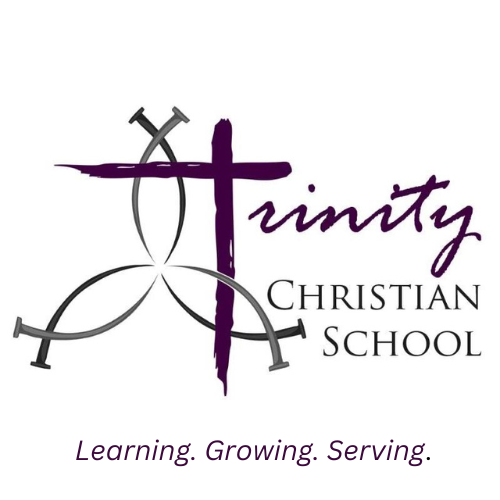4th Grade Curriculum

Mathematics
Students start the year in Topics 1-4 with a quick review of basic multiplication, division, and place value concepts learned in 3rd grade. They will then move onto adding and subtraction, focusing on being able to add and subtract up to 4-digit numbers and estimating sums and differences.
Next, Topics 5-8 cover multiplication, starting with strategies to determine unfamiliar facts and displaying multiplication sentences using arrays. Next, students move on to learning the expanded and standard algorithms for multiplication, preparing them for multiplying all the way up to 4-digit numbers by a 1-digit number. Students next touch on how to multiply by 2-digit numbers using skills such as rounding and finding compatible numbers to multiply by. Topic 8 covers skills leading toward multiplying 2-digit by 2-digit numbers.
Topics 9-12 cover division as well as reintroducing the concept of fractions from 3rd grade. Students will be introduced to dividing with remainders and will also be able to divide a 4-digit dividend by a 1-digit divisor. Fractional concepts include showing fractions graphically, finding equivalent fractions, reducing a fraction to simplest form, adding a subtracting fractions with like denominators, and being able to convert back and forth from an improper fraction to a mixed number.
Topics 13-16 continue fractional concepts, discuss measurement, and introduce more geometric concepts. Fractions are continued with learning how to multiply a whole number by unit fraction and by a fraction. Decimals are introduced in relation to fractions and then skills for comparing and ordering fractions will be learned. Measurement includes customary and metric weight, length, and mass as well as time. The geometry concepts that are reviewed from 3rd grade include angles, rays, and lines. Students will learn how to measure angles and how to change between different customary and metric units. Students will end the year with a series of lessons designed to prepare them for 5th grade, which included such concepts such as the distributive property, using variables, and extending decimal concepts.
Students will have weekly Math centers time. In Math Centers, they work on activities such as XtraMath, a website that promotes basic fact fluency and IXL, a website that reinforces concepts taught in class and gives more opportunities for targeted remediation and enrichment.
English Language Arts
Weekly assessments are given to gauge student understanding of reading comprehension strategies, vocabulary strategies, and the ability to write critically about the presented stories. Additional novel units which students read together in class may include Because of Winn-Dixie by Kate DiCamillo, Snow Treasure by Marie McSwigan, and Time Warp Trio: Knights of the Kitchen Table by Jon Sciezcka.
ELA includes reading, writing, language, speaking and listening. Students read and write daily and work on the process of writing from brainstorming ideas, drafting and revising. Students write responses to literature, and more creative story pieces. Students also analyze informational text and respond with well thought out answers based on text evidence. Students will build upon skills learned in 3rd grade for longer writing pieces and by the end of 4th grade be able to write pieces containing 3 body paragraphs of 5-6 sentences, an introduction, and a conclusion.
Cursive writing is a component utilizing the Zaner Bloser workbook.
Spelling, vocabulary, and grammar are included in the textbook series. Novel Units include vocabulary and spelling directly from the novel.
Students complete a Book of the Month from October to April. This is a self selected title which is the genre of the month. Students complete a different book report/project each month. Students have the opportunity to present the information from their books in many different media, such as posters, alternate book covers, news reports recorded with their Chromebooks, and in-costume summaries of the book.
Technology is used daily in class, including but not limited to showing unit and week introduction videos, collaboratively editing during grammar, and displaying writing pieces for classwide reading and critiquing.
Students will also have weekly ELA centers time, during which they will work with their spelling words in sorting and coloring activities, read silently, listen to reading using the Epic website, read to each other aloud, and work on directed writing and free writing activities.
Religion
We alternate between presenting the 3rd and 4th grade curriculums. 3rd Grade is an overview of the Christian faith, covering the Bible, the Six Chief Parts of Christian Doctrine, the Ten Commandments, the Apostles Creed, along with the Lutheran understanding of Holy Baptism and the Lord’s Supper. 4th grade is a year of using familiar Bible stories to dig deeper into the faith. Students will learn more about creation, the Exodus, David & Goliath, Jesus’ birth, ministry, and death, along with so much more!
Memory Work happens weekly. It consists of two weekly verses. One Bible verse is used in the 1st and 2nd quarter, while a different verse is used in the 3rd and 4th quarters. A second verse is rotated weekly and corresponds to one of the weekly lessons. Students will be provided with the verses typed out at the beginning of the week and must fill in the blanks on Friday.
Science
Topics Covered: Energy & Motion, Human Uses of Energy, Waves and Information, Earth’s Features, Earth’s Natural Hazards, The History of Planet Earth, Structures and Functions (of plants & animals), & Human Body Systems
Each topic contains 2-4 lessons that cover both scientific concepts and scientific method. Each lesson contains an experiment that either reinforces or introduces the material.
Social Studies
4th Grade Social Studies focuses on the history and geography of New York State. It covers such topics as New York’s geography, Native American Groups and the Environment, Colonial & Revolutionary History, Government of New York State, Civil Rights Reform (African American & Women’s), Westward Movement & Industrialization, and Immigration & Migration.



